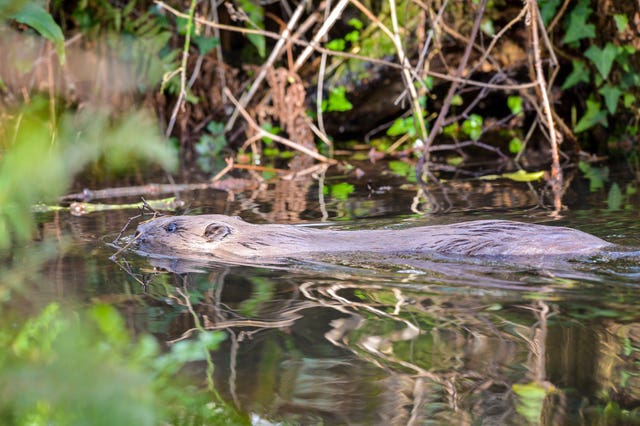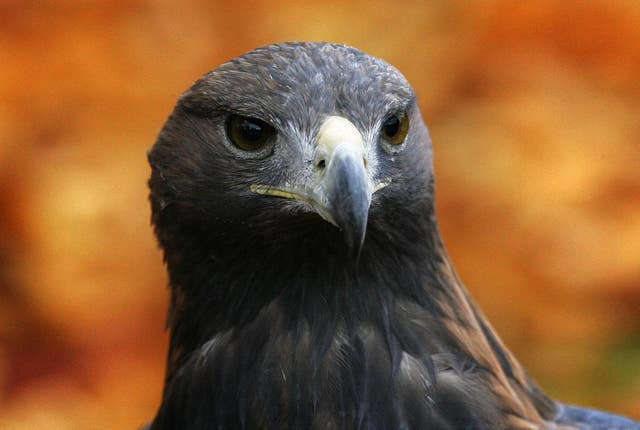
The Government has outlined plans to look at the feasibility of reintroducing species which have been lost from England – or to return rare creatures to areas from where they have vanished.
So what animals are staging a comeback, and what might make a return?
– White-tailed eagles:
Britain’s biggest bird of prey, known as “flying-barn doors” because of their 8ft wing span, became extinct in the UK in the early 20th century.
They were successfully reintroduced to Scotland form the 1970s, and a project began in 2019 to release young birds on the Isle of Wight to establish a breeding population in England.
Government agency Natural England has given the go-ahead for another scheme to release up to 60 birds, which mostly feed on fish, over 10 years in Norfolk.

– Pine martens:
These native carnivores all but vanished from England in the face of extensive hunting and the loss of their woodland home over the past two centuries, and were pushed to a stronghold in Scotland’s north-west Highlands.
They have made a comeback in Scotland but are still very rare in England, prompting the first formal reintroduction scheme in the Forest of Dean led by Gloucestershire Wildlife Trust, with the first 18 animals translocated from Scotland in September 2019.
They have also been found living in Shropshire, and by summer 2020 there were pine martens in nine woodland areas in the county, according to monitoring by Shropshire Wildlife Trust.
– Beavers:
The semi-aquatic mammals, which are known as “ecosystem engineers” because of the way they manage their river habitat by creating dams and wetlands, were hunted to extinction by the 16th century in Britain.
They have returned to Scotland through an official reintroduction scheme, as well as illegal releases or escapes, and also now live wild on Devon’s River Otter and other parts of England, as well as in fenced areas of the countryside.
The River Otter beavers have been given the green light to remain, and the Government will bring out a consultation this summer on reintroducing beavers to other parts of England and managing them in the wild.
The UK's wildcat breeding programme is made up of 30+ zoos, wildlife parks & private collections, helping to ensure their survival 🐾
Learn more about this crucial programme & some of its valued members on our website ➡️ https://t.co/yEA7nSq17s
📽️ @alladale1 Wilderness Reserve pic.twitter.com/jdBuEJDn3S
— Saving Wildcats (#SWAforLIFE) (@SaveOurWildcats) May 12, 2021
– Wildcats:
Britain’s only wild cat species is long vanished from England and Wales and has been pushed to the brink of extinction in Scotland, as a result of habitat loss, persecution and, more recently, breeding with domestic cats.
A conservation breeding programme aims to save the wildcat in Scotland, and wildlife organisations have started efforts to reintroduce the species outside of Scotland, beginning with new facilities to breed kittens that can be released into the wild and research into the best sites for reintroduction.
– Red backed shrike:
These migratory birds, which are slightly larger but slimmer than house sparrows and like to perch on the tops of bushes, fence posts and telephone wires on the lookout for prey, are effectively extinct as a breeding bird in the UK.
A partnership between the RSPB, Knepp Castle Estate – a major rewilding project in West Sussex – and government conservation agency Natural England is looking at the feasibility of bringing back the bird.
The RSPB says that, like for many reintroduction schemes, there is a need to restore habitat at a landscape-scale in order to provide the right conditions to bring back the species.

– Golden eagles:
The UK population of this birds of prey declined from the 18th century as a result of persecution, and was exterminated in England and Wales by 1850, though it survived in small numbers in Scotland.
As persecution was reduced – though it still continues illegally to this day – and harmful pesticides were banned, the golden eagle population in Scotland has slowly recovered, and a few pairs even nested in the Lake District for some years, but it is once again absent from England.
– Lynx:
Like many wild species, lynx are returning across Europe following changes to hunting laws and attitudes to predators, but because Britain is an island, this medium-sized wild cat would have to be reintroduced here.
The shy and solitary woodland hunter was native to Britain but was driven to extinction 500 to 1,000 years ago by hunting and habitat loss.
Supporters of its reintroduction say it would have ecological benefits such as reducing deer numbers but farmers are nervous it could prey on sheep. Efforts to reintroduce it have so far faltered.


Comments: Our rules
We want our comments to be a lively and valuable part of our community - a place where readers can debate and engage with the most important local issues. The ability to comment on our stories is a privilege, not a right, however, and that privilege may be withdrawn if it is abused or misused.
Please report any comments that break our rules.
Read the rules here